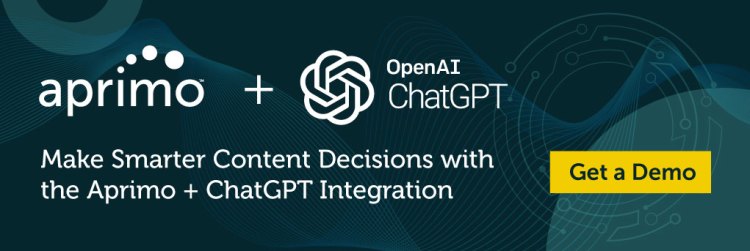Welcome to part five of the Aprimo Generative AI Guidebook! If you missed parts one through four, you can find them here:
- Part 1: The Impact of GenAI on Content Ops and DAM
- Part 2: Using AI Prompts to Improve Content Creation
- Part 3: Training GenAI Models for Brand Compliance
- Part 4: Managing the Risk of AI in Your Business
Tracking Your Generative AI Spend
Now that you’re well-versed in what Generative AI can do for you and how to manage the risks associated with using AI for marketing, let’s (literally) dive into the dollars and cents. There are predictions all over the place about how the usage of Generative AI will explode over the next few years, and the costs associated with this usage will invariably increase and become an important portion of your marketing expenditures. According to a recent survey from Gartner, Inc., 63% of marketing leaders plan to invest in generative AI in the next 24 months.
In many cases, some of your expenses may shift from traditional marketing spend (internal or external agencies, copywriters, market research, and others) to using AI through various providers and models. This will become a tangible piece of your budget that must be estimated, accounted for in planning, and tracked to ensure you’re getting the most of your investment in AI.
This is where Aprimo Plan & Spend comes into play. The Spend Management product in Aprimo already has many tools that can let you determine what portion of your budget should be allocated to Generative AI and how to allocate those funds across different content creation, marketing initiatives, and campaigns. Understanding how this can work will help you be prepared for when these costs start to become significant.
Cost Tracking vs. Consumption Tracking
One key point to make here is that different types of tracking could be used for different purposes.
? Cost Tracking ? reflects your AI token actual costs and what you are billed by the provider
? Consumption Tracking ? who is using Generative AI, which models, and how often, even down to the level of which content or campaign used Generative AI tools.
For the purposes of this guidebook, we are focusing on Cost Tracking. While consumption drives cost, the discipline and data needs are much higher in consumption tracking, and the information is often used for different purposes. Think of Cost Tracking and related trends being of interest to the CFO or CMO, while Consumption Tracking is of interest to Team and Creative Leads, Marketing Operations, and IT Staff.
Budgeting AI Spend
While there are various models, processes, and structures for how marketing teams allocate funds, one aspect that has not been traditionally included is earmarking funds for Generative AI. For good reason ? it’s still a new tool in the belt for most marketers. While attempting to do a bottom-up estimate of Generative AI spend by marketing activity, initiative, or campaign ahead of time would be ideal, in reality, it’s tough to predict Generative AI usage and subsequent spend at that level. The needs are typically not established upfront, nor will you know how many users will engage with AI models and how many tokens are being consumed.
At this juncture, it will be more common for marketing organizations to plan and track their Generative AI costs by business unit, department, or function/role. Therefore, a general grouping of these AI costs by those parts of the organization is recommended. Here’s an example of how this may be structured in Plan & Spend:

Forecasting AI Spend
Pulling a Generative AI cost number out of thin air without understanding which providers and models are involved (and their relative costs per token) will probably not yield good results. Instead, marketing teams can estimate their spend per provider/model and then forecast based on projected usage. The best way to do this is by Expense Category, much like non-AI spend is categorized at the Forecast Line Item level.
Additionally, Aprimo provides tools for ensuring that all AI spend is approved by the proper parties based on the type of provider/model and the projected amount. For example, let’s say that all campaigns for a department cannot be approved unless all content copy is run through an AI ?compliance checker? process. This can easily be configured as a validation step to ensure that the expenses for using these tools are allocated ahead of time. Perhaps there are also certain groups in marketing that cannot use AI for various reasons, so any plans to spend money on AI would be rejected.


Capturing AI Spend As An Expense
Since Generative AI costs are almost always billed based on consumption after the fact, it’s very unlikely that marketers would enter a Purchase Order (also called a Commitment in Aprimo) ahead of time for specific spend at a particular time with an AI vendor and then get invoices that draw down on that Purchase Order like they would for other types of marketing spend. Much more often, the billing statement can be imported from the provider and then matched to the proper Activity where the AI costs for the business unit, department, or function/role are captured. These billing line items (the actual AI spend) can be represented as either Invoices or Journal Vouchers.

While it’s a big unknown exactly how much of a marketing team’s budget will start to be allocated towards Generative AI, it’s good to know that Aprimo Plan & Spend is fully ready now to let you plan, estimate, track, and understand trends in your AI spend, no matter how small that spend might be today and how large it can be in the future.
This series offers a practical plan to quickly utilize Aprimo, GPT, and other AI tools for actionable plans and valuable outcomes.



